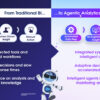The global COVID-19 pandemic has put a halt to physical movements and travel, impacting businesses worldwide. As a result of this situation, companies have had to adapt and alter their growth plans to continue hitting revenue targets and avoid getting left behind. As geographical borders are closing, the good news is that digital boundaries are, in fact, opening.
Businesses in the Philippines and Asia Pacific (APAC) region have indicated a desire to increase investments in digital initiatives across all aspects of the business. According to an IDC survey, it is estimated that the spend on cloud applications and infrastructure will reach US$124 billion by 2025 at a year-on-year growth rate of 28.8%, indicating a sustained focus on cloud-enabled software applications.
Arthur Fernandez, Chief Growth Officer of Jcurve Solutions, a business transformation partner for organizations, shared that “for business leaders in charge of driving growth–be it a Growth Manager, Growth Hacker or Head of Growth–it is time to rethink our approach. From growing business presence to reskilling employees, we are no longer limited by traditional processes, and we can now tap resources, such as talent and innovation, that may have once been out of our physical reach.”
What used to work may no longer work
How businesses operate today has dramatically changed from 12-18 months ago, and now is the time for reflection. Rather than doing what has always been done, businesses need to ask themselves some key questions. Is there a need to pivot as a business or a team? Were there any changes made that supercharged the business’ productivity or success? What key initiatives should be kept in place for the future?
“In truth, no one knows if it is the right move for businesses to invest in technology or ramp up expansion plans in the current climate. However, the key here does not lie in the leap of faith–it lies in the process,” Fernandez said. “A progressive business should continue refining its digital journey by reflecting, pivoting, and adapting, instead of simply jumping on the bandwagon.”
Phygital (physical + digital) roadblocks ahead
Fernandez advised that critical barriers can heavily disrupt the business transformation journey if not addressed holistically. “First is the internal roadblock of finding the right people that are willing to grow with the business. Labor-intensive industries, such as wholesale distribution, manufacturing, retail, food, and beverages, have been forced to shift operations remotely or digitally due to the closing of physical borders. Employees have had to explore opportunities to upskill, cross-train and reskill to adjust to significant changes in their current jobs. Not to mention the reluctance for an individual to shift into a new role or venture into a new vertical, with so much uncertainty looming in the economy. The second is an external roadblock of vendor selection or finding the right partner. In a world where businesses have been forced to embrace digital overnight due to the pandemic, relying on a credible, trusted technology solutions provider, expert, and partner for businesses is a critical step to improve cloud infrastructure and address evolving digital needs.”
Both are ultimately interconnected as businesses look to secure the right team with a greater sense and understanding of how technology can solve industry and market pain points.
Taking next steps to success
The first step is to identify an ideal business ecosystem to build for expansion, ideally prioritizing incentives for the workforce to reskill.
In the Philippines, Global Talent Trends 2021 reported that 61% of employers are in the process of identifying new skills that they need for the post-pandemic landscape, and 23% are already implementing actual “skill-based talent strategies” to improve worker skills. However, only one in ten companies plan to reward skills acquisition, which the study referred to as an area of improvement.
Professional services-based businesses can consider looking at alternative locations for recruitment, with key markets like Southeast Asia, Eastern Europe, and South America increasingly growing their tech talent base. It allows businesses to bring in a diversified, skilled team to ensure the long-term resilience of their growth plans.
Businesses have shifted their operations digitally since the onset of the pandemic, and this will be a common approach for many moving forward as technology skills and capabilities continue to be in demand. To stay ahead, it is recommended to work closely with a partner that has the power to help businesses make sense of the data available and empower them to make better decision-making that drives profitability and greater possibilities.
These trends and tactics encapsulate just how, even as physical barriers and geography may hamper growth in a challenging climate, the digital realm offers a wealth of opportunities as it enables the cross-pollination of ideas, technology, and talent between regions. Businesses must be ready to open their (digital) borders and embrace this new environment to achieve sustainable, long-term growth and remain resilient for future disruptions.












































































































